You spent hours and hours in research, writing and formatting, then promoting that fantastic blog post 18 months ago. You were so proud of it, you shared it far and wide. Then you moved on to your next killer blog post, and left that last post to slowly go stale in the ether. What a waste!
In this guide, let’s discuss why you should be updating old blog posts, how to identify which ones to update and then how to actually update them.
Benefits in updating old blog posts
There are a number of great benefits in updating old blog posts. Let’s focus on four of them, being;
- Improves your relevancy
- Gives repeat readers evolving content
- Fresh content to share on social media
- Boosts your SEO
Now let’s discuss each of these in more detail.
Improves your relevancy
Updating old blog posts means that there aren’t out of date topics or studies sitting on your blog, gathering dust. Keeping your content current ensures that you are seen as relevant and up to date with the topics you write about. There’s nothing worse than seeing a blog post not updated since 2011 or whenever.
Gives repeat readers evolving content
If I regularly visit your blog, it is great to see not only new articles being published, but old articles being updated and expanded upon. This gives readers more motivation and reason to go beyond just the first few most recent posts of yours, and into the deeper archives of writing you have published.
Why spend all that energy on writing and publishing posts, to have them left forgotten on page 80 of your blog?
Fresh content to share on social media
One of the big yet undervalued benefits of writing and publishing blog posts, is having a constant stream of new content to share across your social media channels.
When you update old blog posts, put them back into your promotion queue so they get extra attention again. You can use tools such as Missinglettr or Publer to make the job of scheduling and rescheduling social media posts easier.
Updating old blog posts boosts your SEO
Google loves fresh content. You’ll find that old blog posts that get updated frequently move their way up the search results as well. That’s because it’s in Google’s best interests to show relevant and recent content, not stale posts covered in cobwebs so to speak.
Take a look at the case studies I mention shortly, to see what effect updating old blog posts can have on your SEO efforts.
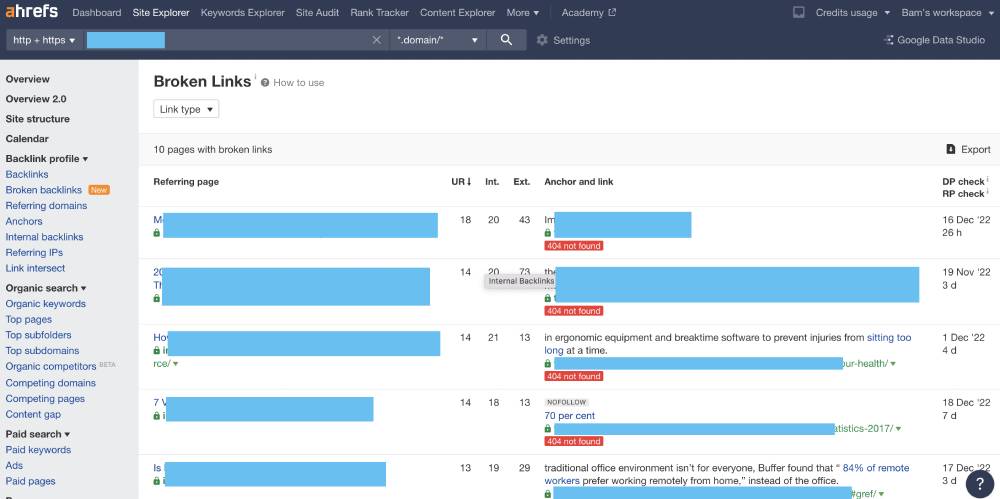
How to find the right blog posts to update
It’s amazing how good it is when you update your blog posts regularly. It could be as simple as adding a few paragraphs or maybe even an infographic or a few new awesome images.
Finding the right targets for updating old blog posts is half the challenge. There’s five types of posts I cover here, and we can find them easily using WordPress (or your CMS), Google Analytics and Google Search Console.
These posts are;
- Crawled but not indexed
- Losing traffic over time
- Out of date
- Low word count
- Oldest posts first
Let’s go through each of these for more detail.
Crawled but not indexed
In Google Search Console, you can see a section called Indexing. Within that area, you’ll find a report that shows why pages have not been indexed. One of the reasons here is Crawled – currently not indexed.
This status is a fancy way of saying that Google has crawled this particular page or pages, but has chosen to not index it. This means that those pages will not appear in search results for the time being.
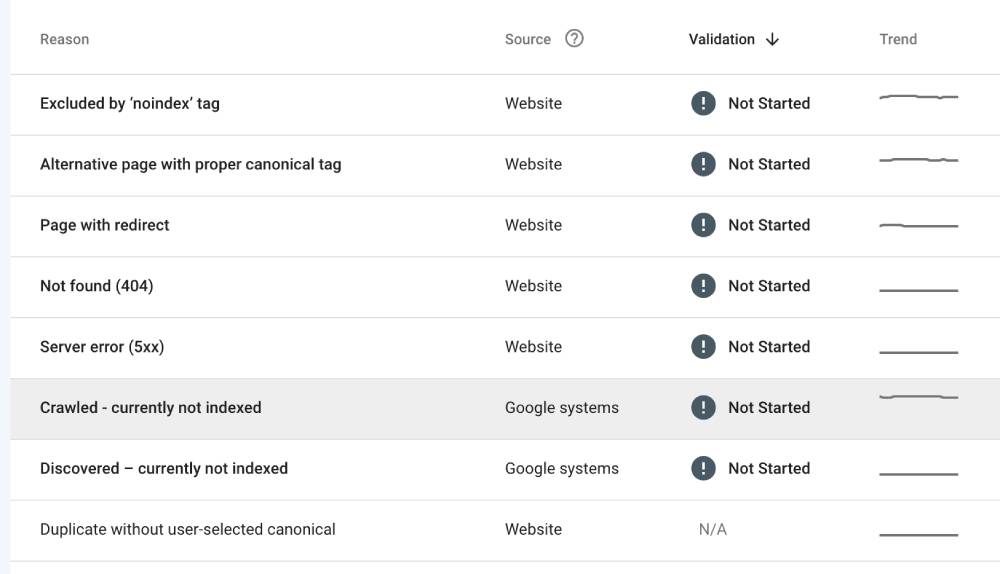
Losing traffic over time
In Google Analytics, you can dive down to individual pages. In doing so, you can sort the pages by views over a longer period, say 12 months, and see a graph like the below for each page.
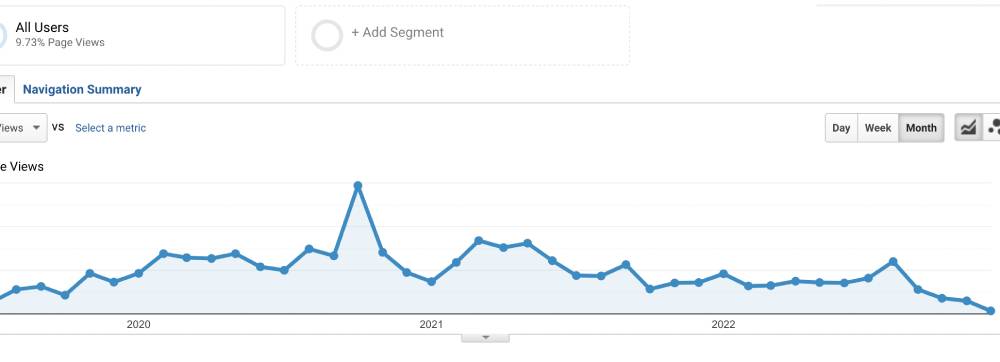
As you can see in this graph, the post was building up in popularity until the first quarter of 2021, when it dived and hasn’t really recovered since. In the last 3-4 months, it has got even worse. This is a perfect example of a post that could do with updating.
Out of date
This could be as simple as old dates in the title, or out of date research, or the topic is actually no longer relevant. I mean, do we still need an article on why masks matter when it comes to COVID? Search your site for years before 2021, or topics you know you may have mentioned.
The point is to try and keep most of your content evergreen if you can. If you can’t, maybe you can either update it or consider deleting old blog posts.
Low word count
When I say low word count, I don’t encourage adding words for the sake of it, you’ll just end up with useless fluff that wastes the readers time. However, we also know that there is a clear correlation between longer blog posts getting more keywords ranked.
Take a look at your keyword competitors. For example, search Google for that posts target keyword. What are the first few organic results doing? Are their posts longer in text, have more images, show video? What makes Google like those posts more than yours?
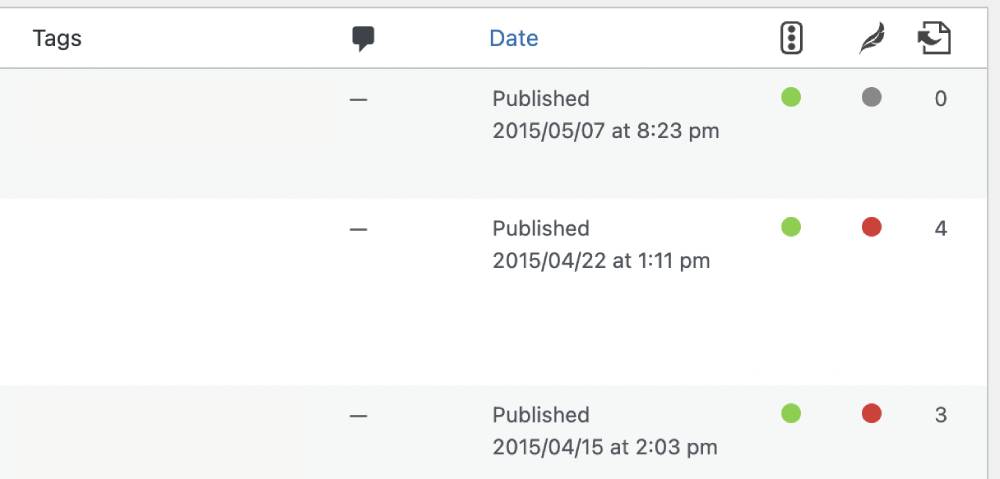
Oldest posts first
Another tactic when updating old blog posts, is to start at the oldest post, and work back. Your oldest post – can it be improved? Are there any broken links? Does your post mention specific dates or years (like the example in image below) that could be updated? Is there any research or news items that there are newer versions to add?
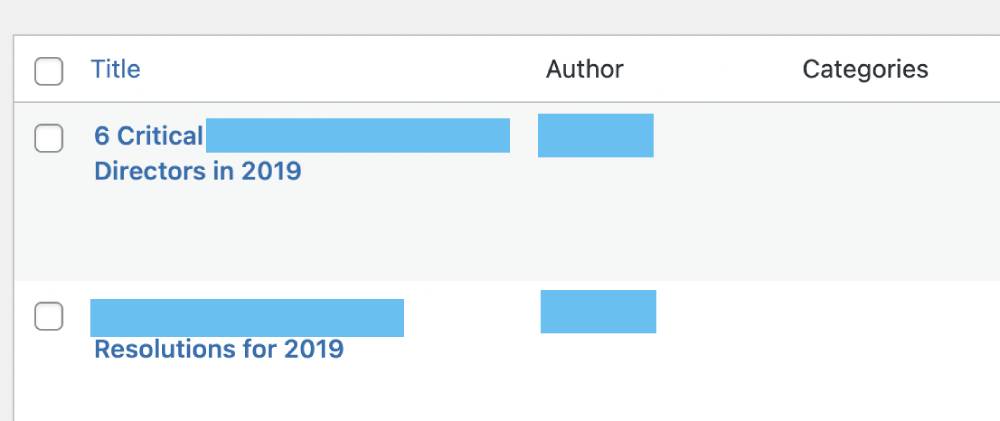
If you want to stop quoting some old study, and find newer research, Google Scholar is a great place to dig up new studies to mention. If it’s just updating dates, make sure that your article URL doesn’t include the year – and make sure any future articles you publish also avoid the year in URL, even if you mention it in the title.
Case study example
I have had some amazing success in updating old blog posts on the 6Q blog. I have had blog posts which had, over time, dropped to attracting only a handful of visitors per week suddenly jump up to dozens or more per week, thanks to adding new content and the like.
In fact, I wrote this lengthy article over on the 6Q blog on this specific topic, that you may want to read as well.
Workflow: How to approach updating old blog posts
Always start by importing all your posts into a spreadsheet. If you are using WordPress, there are a number of plugins that will allow you to export a list of posts and their URL’s. Same with most modern SEO software. You can even export all your URL’s inside Google Analytics.

Once you have all of them, create a spreadsheet with columns for each of the following (as shown above);
- Category
- Post title
- URL
- Publish date
- Updated date
- Status
- Notes
Now let’s talk about how you should be updating old blog posts in detail.
Once you have worked out what posts you will be updating, copy the post content into a Google Sheet or Word document. Start by updating any dates, and highlight any areas that you could find newer research, quotes, etc.
Now look for sections that could be expanded upon, or improved in some way. Is there a section within your post that could be turned into a infographic or table of data? You could create these and add them to those sections.
Reader questions
Are there any comments or social media replies from when you first published? These may provide gold in as far as items that you didn’t cover on the topic the first time around.
Fresh research
Is there any fresh research or data to update? Use Google Scholar or usual search engines to look for any more recent research results that you can include in your updated post.
New graphics
Any infographics you could make? You may have just run out of time the first time you wrote this, to add more graphics, such as infographics, animated gifs and the like. Now is a perfect opportunity to include them.
Any new updates to the topic?
Is there anything else that competitors are writing about, that you should cover? Cut and paste your blog title into Google – what do the first page of results say to you?
Differentiate with analytics and data summary
Differentiate your content with analytics and data summaries. One of the best ways to provide value to your readers is by providing them with more information about your posts.
Create a short slideshow
Here’s another example of great content reuse. Taking the main points from a blog post, and turning them into a slide deck and posting it on slideshare.net. This slide deck has been viewed over 4,000 times since the content was repurposed for slideshare.
Should you update the publish date when updating an old blog posts?
One of the great debates among people is if you should update
In Summary
After reading this guide, I trust that you now understand that there are many good reasons you should regularly update old blog posts as well as continue to produce new content.
You’ve been given case studies of old blog posts getting a new lease of life. You have also been given a recipe on how to choose which blog posts to update. Finally, you now know a process to actually update the post itself.
I trust this all helps you get better search results, build a larger blog audience, and create more value for people. Enjoy!








